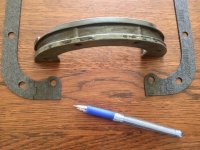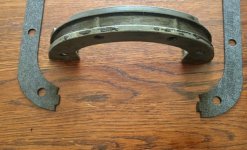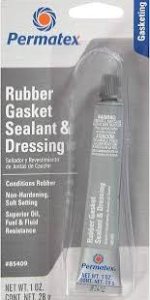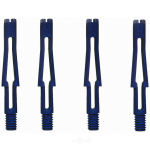Kurt had a thread on all his advice for pan and seal installation.I’ll measure the defection and see what it is. I bet it’s close to the limit.
Also, looked and there wasn’t a washer under the crank pulley bolt…. Might need to find one.
Any other tips on getting the pan seal in place? I need to review the shop manual again.
There was a bit of orange RTV on the rear main seal filler block. Is this correct?
First time inside my 6-226, and was happy there weren’t any glaring obvious maladies within…
If you're reeeeeeeeally nice, maybe Kurt will link the thread. His advice on sealant types was valuable.




